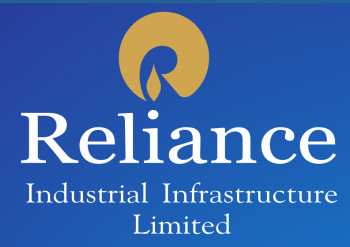By Anshuman Magazine
It has been reported that Over the past four decades, several Asian economies have championed the art of outsourced and competitive manufacturing. Across Taiwan, China, South Korea, and Thailand, the manufacturing sector has been a key driver of their economies. Industrial ecosystems across these countries have witnessed a steady growth over the years, resulting in the sector contributing upwards of 25% to their GDPs.
If we are to study the transformation of these nations, from developing regions to major industrial powerhouses, one key factor stands out as a change catalyst and that is the dedicated focus towards the provision of high-quality industrial infrastructure for the manufacturing sector along with enhanced multimodal connectivity.
Industrial Development
This has typically been in the form of roads, ports, and airports for cargo movement, high-quality uninterrupted and dedicated power supply, adequate water supply and water treatment systems, sewage and waste treatment facilities and ready industrial land for manufacturing.
Such resources have been assured in abundance to both large anchor industrial tenants as well as medium to small scale industries, through the development of dedicated industrial zones on a cross-country platform.
These focused areas of industrial development have been established through favorable central government policies together with the involvement of the private sector, successfully promoting plug-and-play industrial development over the past decades combined with necessary living and commuting amenities.
Historically, such factors of production are needed to manufacture goods efficiently and competitively across a wide range of industries and therefore have proved to be a crucial reason for success in attaining economies of scale and exponential growth of the industrial sector.
Organic Development
In the case of South Korea, it has been characterized by concentration of industrial activity towards specific manufacturing sectors, supported by raw material synergies, tailored policy support, and economic incentives, ease of doing business initiatives, and common infrastructure provision based on sector and value chain of activity.
Over the years, this has resulted in the organic development of successful clusters such as the Daedeok Innopolis, Daejeon Industrial Park and the Gumi Electronics Cluster which have exhibited enhanced productivity, efficient input-output synergies, and rapid innovation through the advantages of co-location for specific sectors such as Food, Textiles, Electronics, Automotive, etc.
Foreign Domestic Investment (FDI)
In comparison, from an Indian perspective, the growth story post-liberalization, over the past three decades of 1991-2021, has been quite different. Our primary focus has been the growth of information technology services, in contrast to the economic drivers promoted by our Asian neighbors, which gave more impetus to manufacturing.
However, if we are to observe closely the manufacturing sector in India during the economic reform years, this sector too has exhibited significant expansion, with the recent years from 2016 – 2019 witnessing the growth of about 7% CAGR.
This expansion has primarily been driven by promising hinterland raw material synergies, competitive land and utility pricing, favorable industrial policies, reduction of trade tariffs/barriers and greater ease of operational approvals along with the presence of a formidable domestic consumer base across the country.
The share of manufacturing in India’s Foreign Domestic Investment (FDI) inflows also rose from 56% in FY 2015-16 to 72% in FY 2020-21, an indication of increased global industrial investor confidence, prognostically attributed to the steady improvement in India’s Ease of Doing business rankings (from 142 in 2014-15 to 63 in 2019-20).
Manufacturing Sector
One can, therefore, safely conclude that the country’s manufacturing sector has witnessed significant value formation over the past few years through domestic market penetration, creation of export opportunities, and the emergence of India as a manufacturing destination of choice for major international industrial companies.
However, close scrutiny reveals that although the scale and quantum of the manufacturing sector in India have grown successfully and substantially, the share of the same within India’s GDP has remained almost constant over the past decade at about 14% from 2000-2020.
Indian Economy
As we complete 30 years of economic liberalization in 2021, there is an underlying need to introduce catalyst drivers, which will underpin the next phase of growth within the Indian economy.
Such interventions become so much more relevant today, given the growth challenges in a post-COVID geopolitical scenario. Therefore, in the upcoming decades, India must have the ability to sustain a growth momentum to ensure the creation of economic value and provision of meaningful employment for the masses.
The answer to this future growth conundrum lies in the optimum expansion of the manufacturing sector, which will bring in manufacturing-induced growth to our economy, maximize labor substitution benefits and make the industrial sector the key growth driver for our nation.
A report by the Mckinsey Global Institute estimates that the manufacturing sector in India has the potential to grow by 9.6% in terms of Real CAGR FY 23–FY 30 if specific reforms are successfully enacted across key themes.
Industrial Park Rating System
In line with this vision of expanding the manufacturing sector, the government over the past 7 years has introduced a slew of initiatives aimed at enhancing the competitiveness and investment attractiveness of the industrial ecosystem in India.
The introduction of a uniform taxation system in the form of GST had a significantly positive impact on the ease of doing business in the country while simultaneously leading to large-scale adoption of the hub and spoke distribution models offering proven cost and operational efficiencies for companies.
Over the years, this has further been supported by sector-specific proactive policy initiatives such as the Production Linked Incentives (PLI) Scheme, reduction on corporate taxes for new manufacturing enterprises, and enhancing the overall ease of doing business at a micro-level through the integration of central and state-level initiatives under the Business Reforms Action Plan (BRAP) led by DPIIT, leading to India emerging as a globally competitive manufacturing destination.
In addition, initiatives such as the Industrial Park Rating System (IPRS) coupled with the recently introduced GIS-based industrial landbank portal allows investors, policy-makers as well as financial institutions to evaluate the competitiveness of Indian industrial parks against global benchmarks on parameters such as internal and external infrastructure/connectivity and business services available to make informed location decisions.
Industrial Corridor Development Program
Incoherence with the above initiatives, which are in a suitable direction to provide fillip to manufacturing across the country, the Industrial corridor development program of the Government in India is expected to emerge as the key fulcrum around which manufacturing will expand its nationwide footprint.
The objective is to primarily address value addition in the manufacturing sector in a comprehensive, equitable, and unified manner that would complement, rather than compete. One of the key aims is to focus on the intelligent distribution of sector-level opportunities across states and districts, that offer unique comparative advantages based on hinterland synergies, in the form of industrial nodes.
The proposed industrial corridors are also expected to lead to the emergence of sustainable industrial cities, where both policy and infrastructure will come together in a cohesive manner, thus allowing India’s comparative advantage to proliferate cohesively across each priority industry. The program is being actioned under the aegis of the National Industrial Corridor Development Corporation (NICDC), a dedicated central government department that will oversee both strategic and on-ground development decisions.
Industrial Corridor Project
Initiated through the development of only a single corridor, the Delhi-Mumbai Industrial Corridor (DMIC), today the industrial corridor project is a much more comprehensive enterprise spread across the length and breadth of India.
The government has over the past few years further enhanced the national corridor network to 11 integrated industrial and economic corridors, thus enabling connectivity to all key economic nodes in the country. Under the guidance and strategic development focus of NICDC, the influence of the program has been expanded in multiple phases.
In the first expansion phase, 5 new corridors were established with an act east and south policy viz. Amritsar-Kolkata Industrial Corridor (AKIC), Bangalore-Mumbai Industrial Corridor (BMIC), Vizag-Chennai Industrial Corridor (VCIC), and Chennai-Bangalore Industrial Corridor (CBIC).
In the second phase, extensions to these corridors were finalized, which brought into the ambit of even the central states of India, as influence regions of the Industrial corridor development program, for ensuring a wide cross geography footprint.
In the current context in terms of implementation, the recently announced INR 100 Trillion Pradhan Mantri Gati Shakti Bharat Master Plan as part of the Honorable Prime Ministers speech on Independence Day 2021, will be the foundation for the industrial corridor program.
As part of Gati Shakti, the development of dedicated high-speed freight corridors, national highways, waterways, railways, ports, and airports, will provide industrial corridors and nodes with multi-modal market access to various domestic and international demands hubs. The long-term plan is aimed at seamless connectivity between industrial nodes through interconnecting road, rail, port, and airport networks.
This multi-modal transportation advantage, combined with reduced travel times will improve industrial productivity and enhance capabilities of cargo and labor inputs across industrial sectors, thus lowering the overall logistics costs across India.
We now move into the identification of 4 key development elements of the Industrial corridor program, which will promote the sustained expansion of industries and allow for timely principal gains across the manufacturing sector across India, as we have repeatedly observed from the industrial expansion of the Asian economies of China, Thailand, and South Korea.
Provision of specialized and high quality ‘plug and play’ industrial infrastructure
NICDC’s unique differentiation is the long-term focus towards providing sustainable and specialized industrial infrastructure for manufacturing companies. Let us take the example of Aurangabad Industrial City (AURIC), which is currently being developed by the Aurangabad Industrial Township Ltd (AITL), under the Delhi-Mumbai Industrial Corridor.
Spread over 10,000 acres, the city houses India’s first underground cabling system with Gas Insulated Switchgear substation managed through SCADA systems for the provision of reliable power to manufacturing firms.
Multiple pioneering industrial infrastructure development initiatives are also being implemented in AURIC including end-to-end Fiber-to-the-Curb architecture and controlled water recycling and sewage treatment facilities for the usage of optimum utilities for both large and medium scale industrial companies.
In addition, this Industrial node also has a provision for centralized surveillance systems, environmental sensors, and a fully online e-Governance system which is expected to digitize procedures and utilize analytics and real-time monitoring to ensure seamless delivery of key services to potential investors.
Such initiatives from the NICDC corridor development program offer distinct competitive advantages for manufacturers looking at setting up in these nodes and directly benefit manufacturing costs and capacities, in an advantageous manner, for industrial sectors to sustain productivity from a long-term perspective.
Industrial nodes as platforms for attracting large-scale manufacturing investments
Focus towards the development of high-quality industrial infrastructure, across the NICDC industrial nodes has created a sustainable and favorable platform for attracting large-scale anchor tenant-led investments across these projects.
Investments from global companies such as Hyosung (from South Korea) in the Aurangabad Industrial City project and Haier (from China) in the DMIC Integrated Industrial Township Greater Noida are testaments to the investment worthiness of the industrial nodes being developed by NICDC and the need for plug and play industrial infrastructure.
Driven by such large scale anchor tenant manufacturing investments, over the medium to long term, India’s Industrial corridors are expected to witness the development of an industrial cluster-based approach, that will catalyze the country’s shift from basic industrial sectors (such as Food and Beverages, Apparel & Textiles, Chemicals, Engineering, etc.) to relatively higher value-added manufacturing sectors, thereby attracting further global interest from sectors such as Electronics, Defense and Aerospace, Renewable Energy, Automotive (including electric vehicles), Pharmaceuticals, etc.
Such an intelligent ‘clustered’ manufacturing ecosystem is expected to lead to India’s emergence as a preferred industrial investor destination for global manufacturing majors, specifically against the backdrop of the COVID-19 pandemic which has caused subsequent disruption of supply chains, leading to multiple global conglomerates evaluating deploying a ‘China plus one’ manufacturing deployment strategy in Asia.
The government has also been making conscious efforts to create an inclusive environment for the growth of the medium and small-scale industrial sectors across the country.
This is supported through incentives such as emergency credit line guarantee, custom duty cuts on certain products, moratorium on term loans, labor reforms and skill development programs. In this context, investments from the anchor and large-scale manufacturing tenants across NICDC nodes will organically create further need for medium and small-scale industries.
which aim to satiate demand for intermediate component inputs arising from these larger firms. Thus, the development of industrial corridors is expected to grow the medium and small-scale supplier ecosystem, enabling specific industries, such as electronics and high value add manufacturing, to benefit from a synergistic and balanced growth of both large and medium scale industries, within the Indian industrial environment.
Enabling long term sustainability across the development of Industrial cities
One of the key objectives of the industrial corridor development initiative is to ensure equitable growth between two established economic hubs, by the organic expansion of industrial influence areas, thereby including within the ambit of industrialization, smaller towns, and cities across the states of India.
The development of industrial corridors being undertaken in India is thus aimed at promoting synergies between urbanization and industrialization within the identified industrial clusters/nodes.
It aims to develop cities that would not only function as manufacturing hubs by bringing in higher value-added production but also as preferred destinations for the habitation of people, by social infrastructures such as affordable housing, retail, education and healthcare.
The industrial nodes thus being developed as part of the industrial corridors in India are planned to be large-scale city-level initiatives spread across 20 – 50 sq kms, ensuring long-term sustainable growth over a period of two to three decades.
In line with the vision for planned industrial growth across the country, the Government of India has also successfully set up the India Industrial Land Bank (IILB) portal, which has already mapped over 4,300 industrial parks spread across over 560,000 hectares of industrial land in the country and aims to achieve pan-India integration by the year-end.
NICDC’s industrial corridor development program will benefit from the information available under IILB regarding land ownership, zoning, and supply parameters. This will lead to cohesive and long-term planning under the industrial corridors, making sure that industrial and economic townships developed are bolstered with the long-term vision of phased development and self-sustaining characteristics which provide long-term viability to these clusters.
Shared approach between State and Centre towards industrial development
Finally, one of the most important elements for the industrial corridor development program has been the successful integration of efforts between state and central level industrial development agencies.
The unique SPV-led framework evolved for the implementation of NICDC nodes allows a cooperative approach to industrial infrastructure development for the very first time in our country. Such shared state and central-led SPVs is a pioneering step enabling cohesive and non-competitive development across the country.
This inclusive development framework will ensure synergistic development of industrial nodes across the country in alignment with state-level interests as well as in compliance with central-level programs such as the National Master Plan and the proposed connectivity enhancement initiatives under the Gati Shakti project.
In conclusion, driven by NICDC’s four strategic pillars of focus, the industrial corridor program is expected to provide a unique unmatched implementation platform for expansion of the manufacturing sector, as a key driver of India’s GDP.
We remain positive that against the backdrop of the development of this initiative, the post-COVID-19 era is likely to witness new growth records for Indian manufacturing, owing to its complementary approach and recalibrated supply chains, thereby proving to be the primary catalyst for holistic economic development across India in the upcoming decades.
About the Author
Anshuman Magazine, Chairman & CEO, India, South East Asia, Middle East and Africa, CBRE.
Sourced from Times of India











